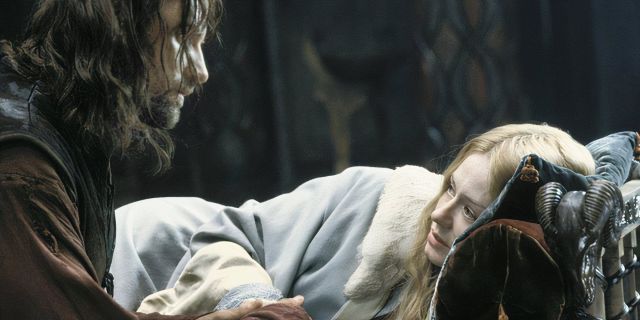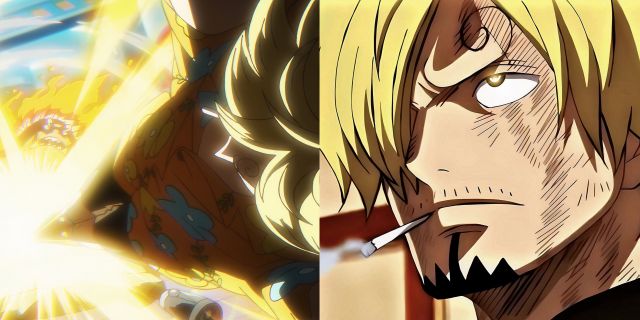Quick Links
-
The Time Period
-
The Great Plague
-
The Aftermath
In The Lord of the Rings, the once great kingdom of Gondor is seen teetering on the verge of collapse. With the threat of Mordor at its eastern borders and no (known) king left to claim the throne, things seem pretty dire for the Gondorians at the start of the trilogy. While the decline of the kingdom can be traced to a multitude of factors, one of the most devastating losses for Gondor occurred hundreds of years before The Lord of the Rings: the Great Plague.
Explained mostly within the appendices of the original novels, the Great Plague is a pivotal event from Middle-Earth’s fictional history. Beginning in the year TA 1636 (roughly 1,400 years before LOTR), the wave of pestilence came from the lands beyond Mordor and swept across Gondor and Rhovanion. The resulting loss of life was nothing short of catastrophic, completely wiping out some of the northern kingdoms of Men and greatly weakening Gondor and its allies. This was one of the primary factors that influenced Gondor’s decline, marking a terrible turning point for the free peoples of Middle-Earth in their constant struggle against the forces of evil.
The Time Period

The Great Plague appeared in Gondor during the middle years of the Third Age. At this time, the line of Kings had not yet been broken, and Osgiliath, not Minas Tirith, was the capital of the kingdom. Gondor had enjoyed several centuries of prosperity for its people, expanding its borders and accruing great wealth. In the 15th century, however, this prosperity began to dwindle as political unrest grew within the kingdom.
In TA 1432, the Kin-Strife began, a civil war which splintered the regions of Gondor. The war began because of the birth of King Eldacar, who was the son of a Dúnedain (descendents of Númenor) father and a Northern mother. The people of Gondor — who mostly descended from Númenor themselves — widely disapproved of this union and saw it as an affront to their lineage. When Eldacar was finally crowned he was scorned as a “half-breed,” and this dissidence grew into a full-fledged rebellion. Eldacar’s cousin, Castamir the Usurper, seized the throne and forced Eldacar into exile.
Castamir’s rule was a brutal one, and his subjects soon came to resent him. Osgiliath was ransacked, destroying some of Gondor’s most precious heirlooms and monuments. Finally, in TA 1442, ten years after his exile, Eldacar returned alongside an army and began a siege on Osgiliath. Castamir was killed in the conflict, and his followers fled south to the region of Umbar. While the Kin-Strife had finally come to an end, this victory was won at a hard cost. Many of Gondor’s greatest soldiers, especially those of the Dúnedain, had been lost in the war, and the kingdom now had a newfound enemy on its southern borders: the descendents of Castamir, who would later become the Corsairs of Umbar.
The Great Plague

Two hundred years after the events of the Kin-Strife, the Great Plague arrived at the borders of Gondor. Far away, in the eastern land of Rhûn, the disease first arose, cutting a swath through the Easterlings. In TA 1635, in the midst of an especially cold winter, dark winds from the east brought the sickness to Rhovanion (the region north of Gondor). More than any other population, the Northmen of Rhovanion were especially affected by the disease, since they were not as skilled in medicine as the Gondorians. By the time the plague had passed, the population of Rhovanion had been halved, along with many of their horses.
The first cases of the plague in Gondor appeared in TA 1636, and they soon spread like wildfire. The cities of Calenardhon and Osgiliath were struck the hardest, with the former ending up almost completely abandoned. In Osgiliath, the losses were so great that a large portion of the city’s residents relocated to the woods of Ithilien. The disease even spread to the royal family, taking the lives of then king Telemnar, his children, and the White Tree itself.
From Gondor, the plague spread west, devastating the region of Eriador. The land of Cardolan, once home to great men who resisted the evil Witch-King, was completely destroyed. The pestilence even spread to the sheltered hills of the Shire, killing a great many of the Hobbits who dwelt there. Luckily, the plague was also devastating to the forces of evil, greatly weakening both the Orcs of Mordor and the servants of Angmar. Because of this, no attacks were launched on the weakened kingdom of Gondor during this time, and the people there were able to persist.
The Aftermath

The Great Plague lasted for roughly two years, though the effects of its losses were felt for centuries after. In Gondor, the role of king was succeeded by King Tarondor, the nephew of Telemnar. Tarondor planted a sapling of the White Tree, which had died during the plague, and permanently relocated the capital of Gondor to Minas Tirith (then called Minas Anor). Though the healing process was slow, with little interference from Mordor, Gondor was able to recover.
While it’s never been quite confirmed, the most logical explanation for the Great Plague is the likeliest culprit imaginable: Sauron himself. At the time that the Great Plague first began to spread, the forest of Greenwood was also succumbing to terrible darkness. This darkness would later prove to be the result of the Necromancer (AKA Sauron), who transformed the once beautiful woods into the shadowy realm of Mirkwood. Considering that Sauron’s powers were especially great in Rhûn, it’s not a stretch to infer that the plague was a result of the Dark Lord’s re-emergence. Whether intentional or not, the return of Sauron to Middle-Earth likely instigated a wave of disease, a terrible warning that the free peoples were too preoccupied to possibly heed.











Leave a Reply